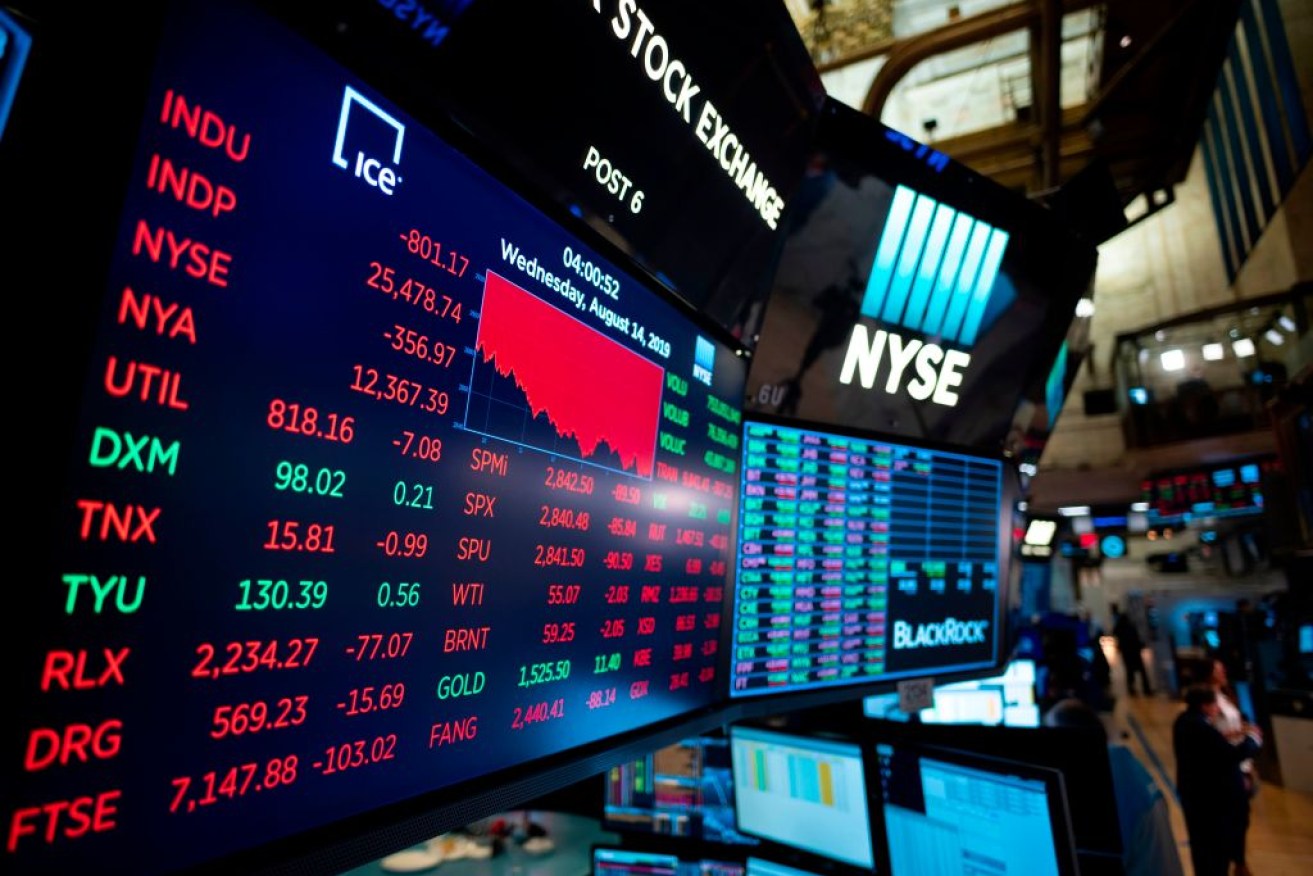ASX tumbles $50bn on US recession, China slowdown fears

It was an ugly day for Wall Street, as stocks plummeted amid worsening economic fears. Photo: Getty
The Australian sharemarket has wiped out $50 billion worth of gains it made in the past two months.
The benchmark ASX 200 had fallen 2.6 per cent to 6427 points by 2pm Thursday (AEST), with nine out of every 10 stocks in the red.
The broader All Ordinaries index dropped by a similar level to 6508 points.
It came after Wall Street suffered its worst one-day fall of 2019 on heightened fears of a United States recession, triggering a sell-off across global markets.
The likelihood of the US falling into recession next year is “growing”, with bond markets pricing in a 38 per cent chance, Fidelity International’s cross asset investment specialist Anthony Doyle said.
“While we don’t expect an imminent recession, the case for further rate cuts in the US is getting stronger,” he said.
He also said the US Federal Reserve will have little choice but to “ease rates, thus keeping US Government bonds from rising materially”.
Best and worst performers
Every sector was posting heavy losses, with energy (-5.1 per cent), technology (-4.4 per cent) and industrials (-3.3per cent) among the worst performers.
The stocks experiencing the steepest falls include funeral company InvoCare (-7.8 per cent), Blackmores (-9 per cent) and information technology firm Appen (-8.8 per cent).
Blackmores shares slumped to a four-year low of $75.80.
This was after the vitamins and supplements maker slashed its final dividend by 55 per cent, as its full-year profit dropped 23.6 per cent to $53.4 million.
Gold miners were the best-performing stocks after a surge in the precious metal’s spot price.
Shares in Evolution Mining, St Barbara and Northern Star Resources have jumped between 1.5 and 2.1 per cent.
“Precious metals and gold miners will continue to outperform as investors seek out safe havens to protect against volatility,” Saxo Capital Markets strategist Eleanor Creagh said.
“Heightened geopolitical risks and trade tensions set to weigh on global growth combined with an aggressive easing cycle from the US Fed, with a further rate cut set for September spurs demand from gold and dividend paying gold miners as a store of value.”
Meanwhile, the Australian dollar had lifted to 67.84 US cents, a moderate gain of 0.5 per cent.
The local currency was boosted by stronger-than-expected job figures – which revealed 41,100 new jobs were created in July, with the unemployment rate steady at 5.2 per cent.
US recession fears
The local market fell sharply after the Dow Jones index plunged 800 points in one trading session.
The other major US indices, the S&P 500 and Nasdaq, also dropped by about 3 per cent each, while European markets were caught in the sell-off as well.
The cause of the market panic was a bond market phenomenon known as the “inverted yield” – when interest rates on America’s long-term (10-year) government bonds fall below short-term (two-year) rates.
It has been regarded by traders as a reliable predictor of US recessions in the past few decades.
Furthermore, this “inversion” in bond markets has not occurred since 2007, just before the global financial crisis.
Worse-than-expected economic figures from China also contributed to the market panic – and fears of a global economic slowdown.
China experienced its weakest factory output in 17 years, with its latest official figures showing that industrial production grew by an annualised 4.8 per cent in July – down from 6.3 per cent in the previous month.








